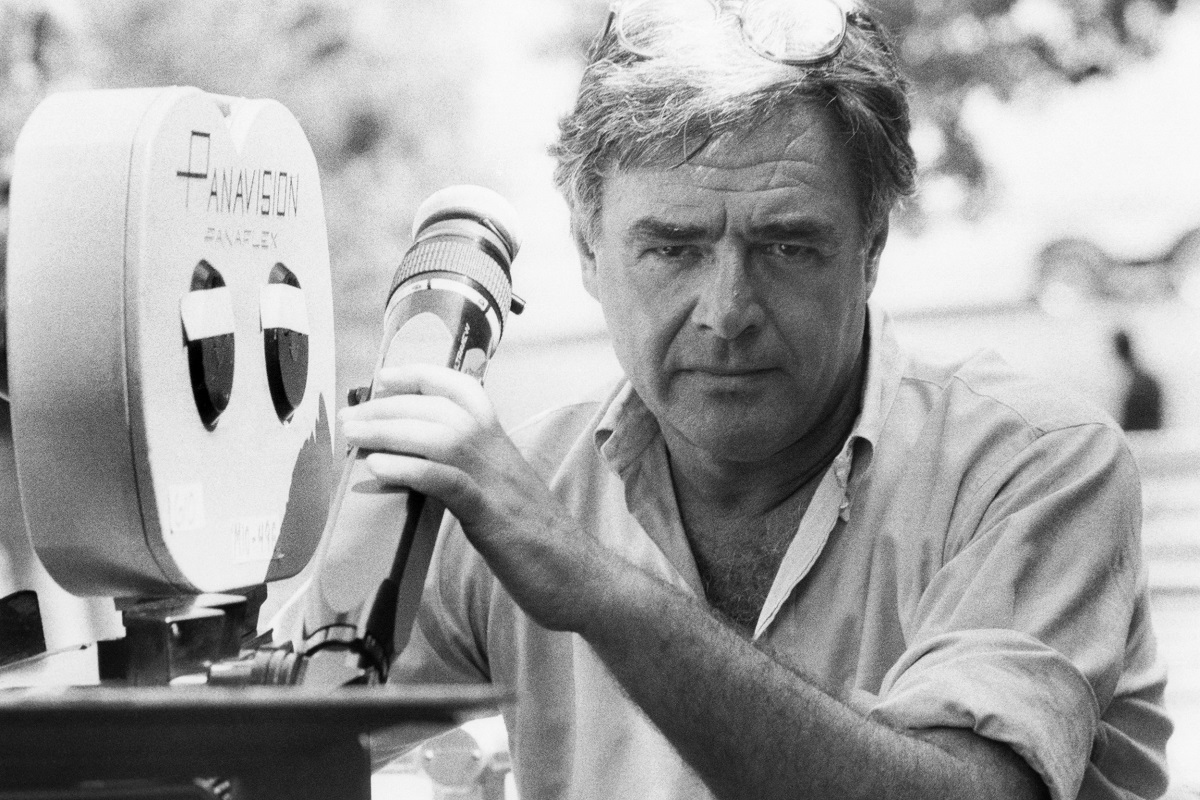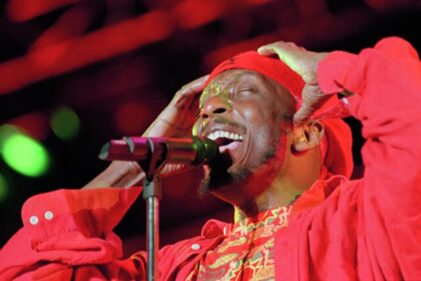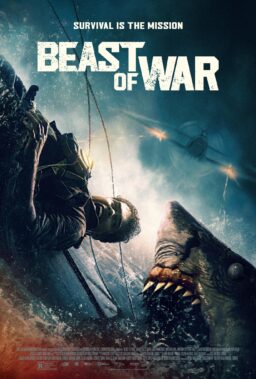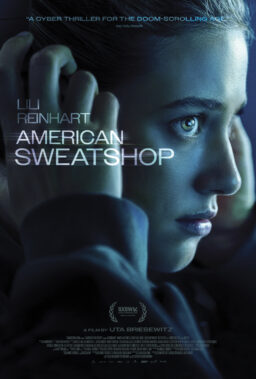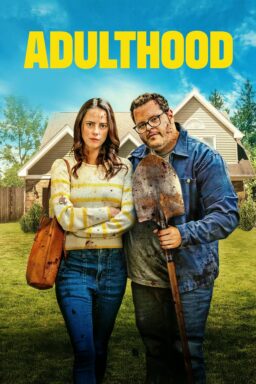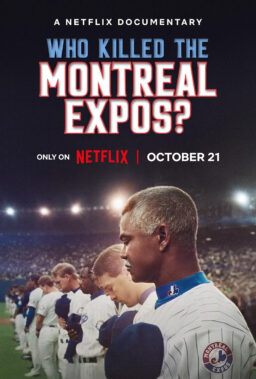With the exceptions of Steven Spielberg and George Lucas, no American filmmaker had a greater influence on the industry as it shifted to a blockbuster mentality in the 1970s and 1980s than Richard Donner, who passed away on July 5 at the age of 91. However, when the histories of that time are recounted, he tends to be largely left out of the discussion for reasons that I am at a loss to explain. After all, the man was responsible for some of the biggest hits of the era—including three that kicked off their own hugely remunerative franchises—and made films that were so hugely influential on their genres that they essentially laid down templates that are still being observed today. One might argue that this is because his oeuvre may have lacked a specific directorial touch to which one could cling as he moved from genre to genre; his efforts may have seemed less significant when compared to some of his contemporaries. They would be wrong, however, because while the vast majority of his output did consist of high-octane spectacles, the best of them were invested with a care and intelligence that a lesser filmmakers probably would not have bothered to even attempt and that made all the difference, both then and now.
Born Richard Donald Schwartzberg in the Bronx on April 24, 1930, Donner originally had dreams of becoming an actor, eventually landing a bit part in a TV show being directed by Martin Ritt, who suggested that Donner look into directing instead and even hired him as his assistant. After working at Desilu Studios directing commercials, he began directing episodes of shows like “The Loretta Young Show,” “Wanted: Dead or Alive,” “Route 66” and “Wagon Train.” During this time, he also made his feature film director debut with “X-15” (1961), a drama about the development of the experimental rocket-powered aircraft that featured rising star Charles Bronson and was advertised as being “Actually Filmed In Space!” Following that feature, he would spend most of the ensuing decade back in television, directing episodes of shows as varied as “Combat!,” “The Man from U.N.C.L.E.,” “Gilligan’s Island,” “Perry Mason,” “Get Smart” and “The Twilight Zone,” where his output included arguably the most famous episode of the show’s entire run—“Nightmare at 20,000 Feet,” in which recovering mental patient William Shatner struggles to convince the other passengers on his flight that there is something on the wing of the plane.
Towards the end of the decade, he returned to feature films with a pair of largely forgotten oddities. “Salt and Pepper” (1968) was a pseudo-Rat Pack endeavor in which Sammy Davis Jr. and Peter Lawford play the co-owners of a nightclub in Swingin Sixties-era London (try and guess which one plays the guy named Salt and which one plays Pepper) who get mixed up in a plot to overthrow the government or some such nonsense. The film is, to put it charitably, not much—and this is coming from someone who can even come up with complimentary things to say about “4 for Texas” (1963)—but it is slightly interesting to watch today in order to see a number of the elements that would crop up in Donner’s later work, ranging from the mixture of action and comedy to the occasional stabs at social commentary, getting their initial play here. He followed this with “London Affair” (1970), which told the story of a 35-year-old American author of pornographic novels living in London who falls in love with and marries a 16-year-old girl—if that isn’t quite insane enough for you, consider the fact that the American author was played by Charles Bronson, perhaps the least likely representative of a man of letters ever presented on film. (The girl was played by a pre-“Straw Dogs” Susan George, which makes a little more sense.)

Donner returned to television for the next few years, working on projects ranging from episodes of “Cannon,” “The Streets of San Francisco” and the infamous “Danger Island” segments of “The Banana Splits” to the highly-rated TV movie “Sarah T.—Portrait of a Teenage Alcoholic” (1975), until he got his biggest break to date when he was hired to direct “The Omen” (1976), a slick horror film in which an American diplomat (Gregory Peck) who agrees to secretly adopt a newborn boy when his own kid dies during childbirth begins to suspect that the kid (Harvey Stephens) that he and his unknowing wife (Lee Remick) are raising is literally the Antichrist. A blatant knockoff of “The Exorcist” (1973) with an array of gory killings substituting for the documentary-like atmosphere that William Friedkin so carefully established in his film, “The Omen” was about as dumb as could be but while the material might have been laughable, Donner approached it in a reasonably straightforward manner—at least as straightforward as could be expected under the circumstances—and it was that attitude. Along with the presence of such respected performers as Peck, Remick, and David Warner (whose gruesome death by decapitation was legitimately startling for a major studio film at that time), that helped to sell the nonsense to such a degree that it became a worldwide hit that won an Oscar for Jerry Goldsmith’s admittedly memorable score and inspired three sequels—“Damien: Omen II” (1978), “The Final Conflict” (1981) and “Omen IV” The Awakening” (1991)—a limp 2006 remake and the short-lived 2016 series “Damien.”
Thanks to the success of “The Omen,” Donner came to the attention of Ilya Salkind, a high-rolling international film producer who, along with his father Alexander, was just then in the midst of trying to launch a massive film project that would bring the most famous comic book superhero of all, Superman, to the big screen. The original plan was a two-part spectacular that would be filmed back-to-back with a screenplay that involved the contributions of Mario Puzo, Robert Benton, and David Newman and a cast that would be headed by no less of a figure than Marlon Brando, who would get an astronomical sum for the relatively brief role of Superman’s father, Jor-El. Many directors were considered for the gig, ranging from Francis Coppola and Steven Spielberg to Sam Peckinpah(?) but after seeing “The Omen” (not to mention its placement on the box-office charts), Donner was given the job of directing “Superman” and “Superman II” and he soon made a couple of key decisions that would shape the course of the film. Objecting to the campy tone on display in the screenplay, Donner brought in Tom Mankiewicz to do a rewrite that eliminated the jokey attitude. As for the casting, while the initial notion was to bring in a star to play the title role (everyone from Robert Redford to Neil Diamond was apparently considered at one point), it became evident that the role would almost have to go to an unknown to avoid any possible bad laughs from the sight of a famous face flying around in tights. Although he was initially rejected for being too young-looking and skinny, the then-unknown Christopher Reeve was given the title role, surrounding him with an all-star cast that would also include the more recognizable likes of Gene Hackman, Margot Kidder, Ned Beatty, Jackie Cooper, Valerie Perrine, and Trevor Howard.
Lasting more than 19 months, “Superman” was an infamously troubled production—productions, actually, since “Superman II” was being shot at the same time—that went over schedule and budget and caused such tensions between Donner and the Salkinds that the producers went so far as to bring in another director, Richard Lester, to serve as a backstop in case they needed to fire Donner. Eventually, the decision was made to set “Superman II,” which Donner had shot roughly 75% of by then, aside in order to finish up the first on the assumption that if it didn’t work, no one would want a sequel anyway. This required a number of on-the-fly changes (such as taking the climax planned for “Superman II” and using it as the finale for its predecessor) that only exacerbated tensions. All of it was reported in the media, which seemed incredulous that so much money—it was the highest-budgeted film ever made to that point—and talent could be applied to something as silly as a movie based on a comic book.

Expecting some kind of garish disaster, audiences and critics were stunned when “Superman: The Movie” (as it would eventually be known) debuted in December 1978 and revealed itself to be one of the smartest and canniest pieces of American pop cinema ever created, and one that plays just as beautifully today as it did back then. From a technical aspect, the film was a stunner—you really did believe that a man could fly—but that was probably the easiest of its achievements to accomplish. Instead of taking the kind of archly campy tone utilized by the old “Batman” television series, the film treated the entire Superman mythos with a seriousness and respect that made it into something more than the cartoon that it might have become in lesser hands. This could have been disastrous because one bad laugh at any point could have destroyed the mood permanently, but while the film did contain plenty of big laughs (I love the bit where Clark Kent tries to find a phone booth to make his quick change but can only find a newfangled one that offers zero cover), they were ones that emerged naturally from the material instead of being stuck in to convey a superior attitude. More importantly, the film had a lightness and charm to it that almost made you forget that you were watching an effects-laden blockbuster—this is one of the few films of its type where the characters and situations are so fully drawn and developed that the dialogue scenes are just as compelling, if not more so, than the big action beats. Throw in a lovely star-making performance from Reeve that helped to further ground the material in reality and you have a film that would not only lead the way for an eventual avalanche of superhero-themed sagas over the next few decades, but which remains arguably the best of them all.
Although Donner shot more than three-fourths of the material that would eventually make up “Superman II” (1981), it would be Lester who was brought in to finish it and get the eventual screen credit. (Decades later, Donner would get a chance to reedit that film with previously unseen footage including material featuring Marlon Brando, which would be released as “Superman II: The Richard Donner Cut” [2006].) Instead, Donner would follow up the mammoth success of “Superman: The Movie” with something wholly different, the far-more-intimate drama “Inside Moves” (1980), an adaptation of the Todd Walton novel involving a troubled young man (John Savage), handicapped in the wake of a failed suicide attempt, who falls in with the denizens of a local dive bar. Although a good and sincere effort with a number of fine performances from a cast that also included Diana Scarwid (who received a Best Supporting Actress Oscar nomination for her work), David Morse, and Harold Russell (making his first film appearance since his Oscar-winning turn in “The Best Years of Our Lives” [1946]), it was barely released in theaters and is all but forgotten today. Donner followed this two years later with another change-of-pace by bringing together two of the greatest comedy talents of all time—Richard Pryor and Jackie Gleason—into one of the worst and most grotesquely unfunny comedies ever made. That would be “The Toy” (1982) in which Pryor plays a down-on-his-luck journalist who allows himself to be literally purchased by a billionaire to serve as a plaything for his spoiled son for a week—the end result would be so questionable from a taste perspective that it actually made those “Danger Island” segments seem restrained and dignified by comparison.
In 1985, Donner released two films. The first was “Ladyhawke,” a medieval fantasy about a pair of young lovers—Navarre (Rutger Hauer) and Isabeau (Michelle Pfeiffer)—who are caught in a terrible curse that transforms Isabeau into a hawk during the day and Navarre into a wolf at night so that they can never be truly together until the spell is lifted. The film seemed to have everything going for it—romance, thrills, laughs (mostly from Matthew Broderick as a young thief enlisted to help the lovers), sweeping visuals (courtesy of cinematographer Vittorio Storaro) and everything else one might want from a fantasy epic—but for whatever reason (possibly the fact that it was told in an utterly sincere and irony-free manner that didn’t jibe with the more cynical times), it proved to be a box-office failure, though its delicate charms have gained a bit of a cult audience in the ensuing decades. His other 1985 effort was “The Goonies,” and since I am fully aware that there are others out there who venerate this film to a far greater extent than I do, I will merely state that it was a big box-office hit that is beloved by many for reasons that I will never understand and simply move on.

Donner would follow that film with “Lethal Weapon” (1987), in which two mismatched cops—a suicidal live wire (Mel Gibson) and a veteran nearing retirement (Danny Glover)—are put together to investigate a suicide that eventually leads to a massive drug-smuggling operation that had its roots in the Vietnam War. Obviously, the film was not the first to invoke the concept of an unlikely pair of cops teaming up to take on the bad guys, nor was it the first to combine big and bloody action beats with moments of comedy. What Donner did was refine the format, much as he did with “Superman,” so that the byplay between the characters was just as integral to the proceedings as the gunplay. Gibson (making the first of what would be six collaborations with Donner) and Glover proved to be an ideal pairing. The end result was a smash hit that would go on to spawn three Donner-directed sequels—of them, “Lethal Weapon 2” (1989) is the best, largely due to the inspired inclusion of Joe Pesci as a motormouthed witness that Gibson and Glover are trying to protect, while “Lethal Weapon 3” (1992) and “Lethal Weapon 4” (1998) offered far fewer rewards to anyone who wasn’t a Warner Brothers stockholder.
With the knowledge that he could always go back to do another “Lethal Weapon” when necessary, Donner then embarked on a series of films that were notable for their eclectic nature, even if he was perhaps not quite the right man for the job in certain cases. “Scrooged” (1988) was an expensive comedic updating of “A Christmas Carol” in which Scrooge was a miserable network TV president (Bill Murray) who learns some valuable lessons over the course of an eventful Christmas Eve. Although the combination of cynical showbiz humor (courtesy of co-writer Michael O’Donoghue) and heartfelt sentiment is sometimes awkward (especially during the bizarre tear-jerking climax that feels more like the final appeal for pledges on a telethon), the film is ultimately funnier than its reputation suggests and it has gone on to become a holiday perennial. When production of “Radio Flyer” was shut down after a week and its original director, screenwriter David Mickey Evans, was fired, Donner stepped in to take over. But not even Donner could do much to salvage a film that awkwardly tried to meld together whimsical magical realism with a serious subject like child abuse, and the film was a notorious critical and commercial disaster when it was released in 1992.
Based on the beloved television series, “Maverick” (1994) was little more than a silly bit of nonsense but as such things go, it had a couple of things going for it—a certain novelty factor due to being a Western that did not take itself particularly seriously and a game cast, including Gibson, James Garner and a cast-against-type Jodie Foster, who were clearly having a blast playing off of each other—that allowed it to end up being far more fun than it probably had any right to be. “Assassins” (1995) was a forgettable action flop co-starring Sylvester Stallone, Antonio Banderas, and Julianne Moore that is most notable today for being an early screenplay by the Wachowskis, though their work was reportedly rewritten so heavily that they unsuccessfully petitioned the WGA to remove their names from the credits. ”Conspiracy Theory” (1997) found Donner once again working with Gibson, this time playing a cab driver whose obsession with complex conspiracy theories involving the government puts him in danger when one of them turns out to be true, and while the resulting film (which also featured Julia Roberts as a lawyer who becomes enmeshed with Gibson’s character, and Patrick Stewart as the bad guy) may have been too preposterous for its own good at times, Donner handled the material in a slick and efficient manner that helped it to become yet another success.
Adapted from the Michael Crichton novel of the same name, “Timeline” (2003) was a nonsensical adventure fantasy in which a team of archaeology students go back in time to medieval France to rescue their professor from the midst of battle—it is just as dumb as it sounds and not worth watching but if you must, Donner’s limited use of CGI during the big battle scenes (relying more on medieval war reenactors) makes them a little more effective than they might have been otherwise. Donner’s final film was “16 Blocks” (2006), a real-time action thriller with Bruce Willis as a burned-out alcoholic cop charged with walking a witness (Mos Def) to a courtroom appearance 16 blocks away, only to find the two of them under fire from people who would do anything to prevent the witness from testifying. Although mostly forgotten today in the haze of too many films in which Bruce Willis plays a burned-out cop seeking some kind of redemption, this is one that actually deserves a second look. Donner directs the action in an economical and assured manner that keeps the storyline from spinning out into complete cartoonishness and he gets surprisingly effective performances from Willis (back when he was still willing to make an effort) and Def as well.
Obviously, Donner did not hit a home run with every one of his films, and there is a part of me that wonders what kind of filmmaker he might have developed into if “Inside Moves” had proven to be more successful than it was. However, most directors go their entire careers without ever making a film that comes even remotely close to what he was able to accomplish with “Superman: The Movie,” a work that will continue to enchant and entertaining new waves of moviegoers for generations to come in ways that the vast majority of the current superhero glut could only dream of accomplishing. Even when the films didn’t quite hit those rarefied heights, the best of them—such as “Ladyhawke,” the first two “Lethal Weapon” films, “Maverick” and “16 Blocks”—were made with such skill and intelligence that they were a pleasure to watch, which is more than can be said about most of the stuff in the multiplexes today.
And if you haven’t seen it yet, please take the opportunity to check out “Ladyhawke”—you can thank me later.

